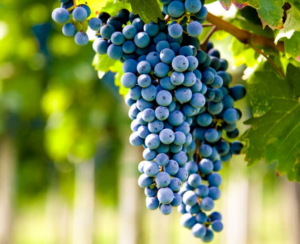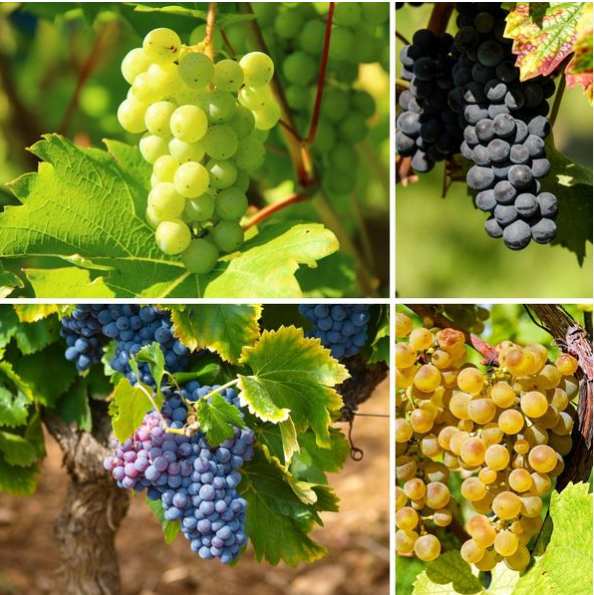Wine, a beverage that has captivated human senses for centuries, owes much of its diverse flavors and characteristics to the types of grapes used in its production. Grapes come in a multitude of varieties, each contributing unique qualities to the final wine. From the bold and robust Cabernet Sauvignon to the delicate and aromatic Muscat Blanc, the world of wine grapes is a rich tapestry of tastes and experiences. In this article, we will delve into the different types of grapes used in winemaking and explore the fascinating nuances they bring to the world of wine.

The Classics: Red Wine Grapes
Cabernet Sauvignon
To begin with, this grape variety is renowned for its deep color, rich tannins, and complex flavors. It thrives in regions like Bordeaux, California, and Chile. Cabernet Sauvignon wines often exhibit notes of blackcurrant, plum, and cedar, with a structured and age-worthy profile.
Merlot
In addition, known for its softness and approachability, Merlot grapes produce wines that are plump, smooth, and fruit-forward. Merlot is often blended with Cabernet Sauvignon to add a touch of elegance and roundness to the final blend.
Pinot Noir
Pinot Noir, considered the “heartbreak grape” due to its finicky nature, offers wines that are delicate, light-bodied, and bursting with red fruit flavors. Moreover, it excels in Burgundy, Oregon, and New Zealand.
The Whites: White Wine Grapes
Chardonnay
Chardonnay is the chameleon of white wine grapes, capable of producing a wide range of styles, from buttery and oaky to crisp and unoaked. Therefore, it’s a global superstar, with notable expressions in California, Burgundy, and Australia.
Sauvignon Blanc
To add on, known for its zesty acidity and vibrant aromatics, Sauvignon Blanc thrives in regions like New Zealand, the Loire Valley, and California. Furthermore, it often presents flavors of citrus, grass, and green apple.
Riesling
People adore Riesling due to its remarkable balance of sweetness and acidity. It can produce bone-dry to lusciously sweet wines, making it versatile. The best Rieslings come from Germany, Alsace, and the Finger Lakes region in the United States.
The Unique and Aromatic Varieties
Muscat Blanc
Muscat grapes, especially Muscat Blanc à Petits Grains, are renowned for their intense floral and fruity aromas. They are a cornerstone of sweet and sparkling wines, like Moscato and Muscat Beaumes-de-Venise.
Viognier
Viognier is celebrated for its lush and aromatic profile, often displaying notes of apricot, honeysuckle, and tropical fruits. Hence, it shines in the Northern Rhône Valley and regions of California.
Exploring Regional Gems
Malbec
Additionally, Argentina has claimed Malbec as its flagship grape, producing bold and fruity wines that have gained global recognition.
Tempranillo
Spain’s Tempranillo gives rise to Rioja and Ribera del Duero wines, known for their elegance and aging potential.
A Blend of Excellence
Moreover, many winemakers opt for blending different grape varieties to craft wines that combine the strengths of each. Bordeaux blends, for example, often include Cabernet Sauvignon, Merlot, and Cabernet Franc. These blends can result in well-balanced and complex wines.
Conclusion
In conclusion, in the world of wine, grapes are the artists behind the canvas, painting a diverse palette of flavors, aromas, and textures. Therefore, as you explore different grape varieties and wine regions, you embark on a sensory journey that offers endless opportunities for discovery. Hence, delve into the realm of wine grapes, where diverse varietals shape the flavors and aromas of your beloved wines.
So, pour a glass, raise it to the grape’s remarkable diversity, and enjoy the wondrous symphony of tastes that wine grapes bring to your palate. Cheers to the endless exploration of wine’s delightful varieties!




